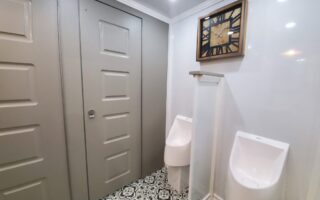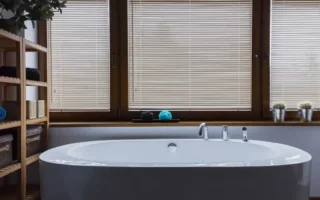When it comes to choosing the right material for under shower tile, it’s essential to consider factors such as durability, moisture resistance, and ease of installation. Each material has its pros and cons, so make sure to weigh them carefully before making a decision.
Proper installation of underlayment is crucial for the longevity and functionality of your shower tile. Follow the recommended guidelines and seek professional help if needed.
With the right material and proper installation, you can enjoy a beautiful and functional shower space for many years to come. Don’t overlook the importance of what goes underneath your shower tile. It sets the foundation for a successful bathroom renovation project.
Importance of choosing the right material for under shower tile
When it comes to renovating your bathroom, choosing the right material for under shower tile is crucial. The material used as a base under the tile can impact the overall durability and longevity of your shower.
High-quality underlayment ensures that your tiles remain securely in place, preventing any shifting or cracking over time. Selecting the appropriate material can help with waterproofing and preventing moisture-related issues such as mold or mildew growth.
By investing in a suitable underlayment material, you are not only enhancing the aesthetic appeal of your shower but also improving its functionality and performance. Keep in mind that different materials offer varying levels of support, insulation, and resistance to water damage.
Different materials are commonly used under shower tiles.

When it comes to choosing the right material for under shower tile, there are a few commonly used options that offer different benefits. One popular choice is the cement backer board, known for its durability and moisture resistance. Greenboard, which is moisture-resistant drywall specifically designed for wet areas like showers.
For those looking for a lightweight alternative, foam boards are also a popular choice, as they are easy to cut and manipulate during installation. Kerdi boards provide excellent waterproofing properties due to their dense foam core and fleece layer on both sides.
Traditional mortar beds offer great stability and can be customized to create slopes for proper drainage in the shower area.
Pros and cons of each material
When it comes to the materials used under shower tile, each option has its own set of pros and cons. A cement backer board is a popular choice due to its durability and moisture resistance, making it ideal for wet areas like showers. It can be heavy and difficult to install.
On the flip side, foam boards are lightweight and easy to work with, but they may not offer as much support as cement backer boards. Plywood is another common material that provides a sturdy base for tile installation, but it is prone to water damage if not properly sealed.
Some people opt for waterproof membranes like Schluter-DITRA or RedGard, which offer excellent protection against moisture infiltration. These products can be expensive compared to traditional underlayment options.
Choosing the material for under shower tile

When it comes to choosing the material for under shower tile, there are several options to consider. One common choice is cement backer board, known for its durability and resistance to moisture. Another popular option is waterproof membrane systems, which provide excellent protection against water damage.
Some may opt for traditional mortar beds, which offer a strong base for tiles but require more time and effort to install compared to other materials. Alternatively, prefabricated shower bases can be used as a quick and convenient solution for those looking to simplify the installation process.
Each material has its pros and cons, so it’s essential to weigh factors such as cost, ease of installation, and long-term maintenance requirements before making a decision. Selecting the right material will ensure a solid foundation for your shower tile that will stand the test of time.
Guide on installing underlayment for shower tile
When it comes to installing underlayment for your shower tile, proper preparation is key. Start by ensuring the subfloor is clean and dry to create a solid base for the underlayment. Measure and cut the underlayment material to fit the space accurately, leaving room for expansion joints.
Next, a thin layer of mortar or adhesive is applied to secure the underlayment. Use screws or nails to reinforce its stability further. Allow ample time for drying before proceeding with laying the shower tile on top.
Seal any seams or gaps in the underlayment to prevent water intrusion and potential damage down the line. Double-check that everything is level and smooth before moving forward with tiling.
Tips for maintaining and repairing the underlayment
Maintaining and repairing the underlayment of your shower tile is crucial to ensure its longevity and durability. Regularly inspect the underlayment for any signs of water damage, mold, or mildew. Keep an eye out for cracks, warping, or soft spots that may indicate underlying issues.
To maintain the underlayment, make sure to keep it clean and dry at all times. Use a mild detergent and water solution to wipe down the surface regularly. Avoid using harsh chemicals that could damage the material.
If any repairs are needed, address them promptly to prevent further damage. Fill in cracks or holes with appropriate filler materials and sealants designed for use in wet environments like showers.
If you notice any significant damage beyond repair, consider replacing the affected sections of the underlayment before laying new tiles on top. Seek professional help if necessary to ensure proper installation and maintenance techniques are followed.




